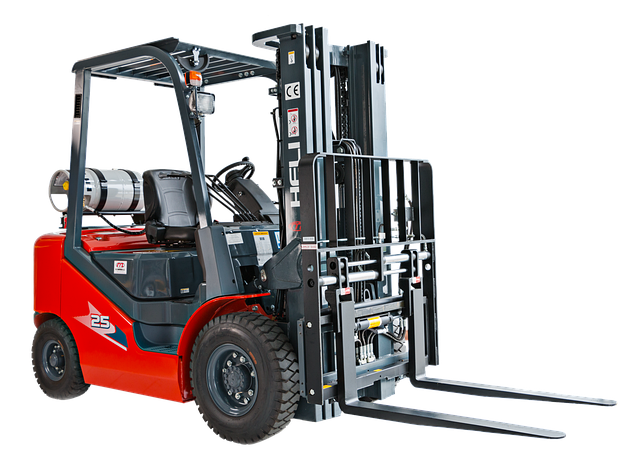Industrial Air Compressors: Powering Efficiency and Productivity in Modern Industry
Industrial air compressors are the backbone of modern manufacturing and production facilities, providing reliable power for a wide range of tools and machinery. From assembly lines to heavy-duty equipment, these systems ensure consistent airflow and pressure, boosting efficiency and productivity across industries. Choosing the right air compressor not only optimizes operations but also reduces energy consumption and maintenance costs, making it a critical investment for any industrial setting.

Types of Industrial Air Compressors and Their Applications
Industrial air compressors come in several distinct configurations, each designed to meet specific operational requirements. Reciprocating air compressors utilize pistons driven by a crankshaft to compress air in one or more cylinders. These compressors excel in applications requiring high pressure but lower volume, making them ideal for auto repair shops, small manufacturing facilities, and construction sites where intermittent use is common.
Rotary screw compressors represent the workhorse of many industrial environments. These machines use two interlocking helical screws to compress air continuously, delivering a steady stream of compressed air with minimal pulsation. Their reliability and efficiency at providing medium to high volumes of compressed air make them suitable for continuous production environments, textile manufacturing, and food processing facilities.
Centrifugal compressors employ high-speed impellers to accelerate air before converting this kinetic energy into pressure. Typically used in large-scale industrial applications, these compressors excel when consistent, high-volume compressed air is needed without oil contamination. Petroleum refineries, chemical plants, and large manufacturing facilities often rely on centrifugal compression systems for their operations.
Scroll compressors use two interlocking spiral-shaped scrolls to compress air in increasingly smaller “pockets.” Their oil-free operation makes them particularly valuable in sensitive applications like medical facilities, laboratories, and electronics manufacturing where air purity is paramount.
Key Benefits of Using Industrial Air Compressors
The widespread adoption of air compression technology across diverse industries stems from several fundamental advantages. Foremost among these is versatility—compressed air provides a clean, readily available power source that can be easily transported through piping systems throughout a facility. Unlike electricity, compressed air poses minimal fire or explosion hazards in sensitive environments, making it an ideal power source for hazardous locations.
Energy efficiency represents another significant benefit. Modern air compression systems can convert electrical energy into mechanical work with relatively high efficiency, particularly when properly sized for their applications and maintained according to manufacturer specifications. When paired with heat recovery systems, the overall efficiency increases further as waste heat can be captured and repurposed for facility heating or other processes.
Air compressors also contribute to workplace safety by eliminating many hazards associated with other power sources. Pneumatic tools generally weigh less than their electric counterparts, reducing operator fatigue and the risk of repetitive strain injuries. Additionally, these tools generate less heat during operation and eliminate electrical shock hazards in wet environments.
Operational flexibility stands as another key advantage. Air-powered systems can be easily adjusted for different operating speeds and torque requirements simply by regulating air pressure. This adaptability allows a single compressed air system to power diverse applications throughout a facility, from precision assembly tools requiring delicate control to heavy-duty impact wrenches demanding substantial torque.
Maintenance Tips for Longevity and Efficiency
Proper maintenance dramatically extends the service life of industrial air compressors while ensuring optimal performance. Regular inspection and replacement of air filters represents one of the simplest yet most effective maintenance practices. Clogged filters force compressors to work harder, increasing energy consumption and accelerating wear. Most manufacturers recommend checking filters monthly and replacing them quarterly or more frequently in dusty environments.
Maintaining proper oil levels and quality is crucial for oil-lubricated compressors. Regular oil analysis can reveal early signs of mechanical problems before they cause catastrophic failures. Following manufacturer-recommended oil change intervals—typically every 1,000 to 8,000 operating hours depending on the compressor type and operating conditions—preserves internal components and ensures efficient operation.
Condensate management presents another critical maintenance consideration. As air compresses, moisture naturally condenses within the system. This water must be regularly drained to prevent corrosion, freezing in cold environments, and contamination of downstream equipment. Automatic drain valves offer a reliable solution, eliminating the human error associated with manual draining procedures.
Belt tension and alignment require periodic inspection on belt-driven models. Loose belts waste energy through slippage, while overtightened belts accelerate wear on motor and compressor bearings. Similarly, checking for air leaks throughout the distribution system prevents energy waste—even small leaks can represent significant energy losses when accumulated throughout a facility.
Implementing a comprehensive preventive maintenance program typically reduces energy consumption by 10-15% while extending equipment life by years. Many facilities find that documenting maintenance procedures and creating regular inspection schedules dramatically improves compliance and equipment reliability.
Cost Considerations for Industrial Air Compressors
Industrial air compressors represent a significant capital investment, with acquisition costs varying widely based on type, capacity, and features. Initial purchase prices range from approximately $5,000 for basic 5-10 HP reciprocating models to over $100,000 for large industrial rotary screw or centrifugal systems exceeding 100 HP. However, purchase price represents only 10-15% of the total lifetime cost of compressed air systems.
Energy consumption constitutes the largest expense associated with compressor ownership—typically 70-80% of lifetime costs. For context, a continuously operating 100 HP compressor consumes approximately $75,000 in electricity annually (at $0.10/kWh), highlighting why efficiency considerations often outweigh initial purchase price.
| Compressor Type | Typical Size Range | Initial Cost Range | Annual Energy Cost | Maintenance Cost |
|---|---|---|---|---|
| Reciprocating | 5-30 HP | $5,000-$25,000 | $3,800-$22,500 | $500-$2,500 |
| Rotary Screw | 10-500 HP | $15,000-$200,000 | $7,500-$375,000 | $1,500-$20,000 |
| Centrifugal | 100-1000+ HP | $100,000-$500,000+ | $75,000-$750,000 | $10,000-$50,000 |
| Scroll | 3-30 HP | $8,000-$30,000 | $2,300-$22,500 | $800-$3,000 |
Prices, rates, or cost estimates mentioned in this article are based on the latest available information but may change over time. Independent research is advised before making financial decisions.
Maintenance costs typically account for 10-15% of lifetime expenses. Higher-quality systems generally require less maintenance but command premium prices. Many facilities find that investing in premium efficiency motors, variable speed drives, and advanced control systems delivers substantial return on investment through energy savings, despite higher initial costs.
The Future of Industrial Air Compression
Technological advancements continue to reshape the industrial air compression landscape. The integration of Industrial Internet of Things (IIoT) capabilities enables predictive maintenance through real-time monitoring of critical parameters like temperature, pressure, and vibration. These systems can detect potential failures before they occur, reducing downtime and repair costs.
Energy recovery systems represent another significant advancement. Since approximately 90% of the electrical energy used by air compressors converts to heat, sophisticated heat recovery systems can capture this thermal energy for space heating, water heating, or process applications. These systems can recover up to 80% of input energy, substantially improving overall system efficiency.
Variable speed drive technology continues to evolve, allowing compressors to precisely match output to demand rather than cycling between loaded and unloaded states. This technology can reduce energy consumption by 20-50% in applications with variable demand patterns while extending equipment life through reduced cycling.
The industrial air compressor industry continues moving toward more environmentally friendly designs with lower noise levels, reduced emissions, and improved efficiency. These advancements ensure that compressed air will remain a fundamental power source in industrial environments for decades to come, continuing to power efficiency and productivity across diverse manufacturing sectors.




